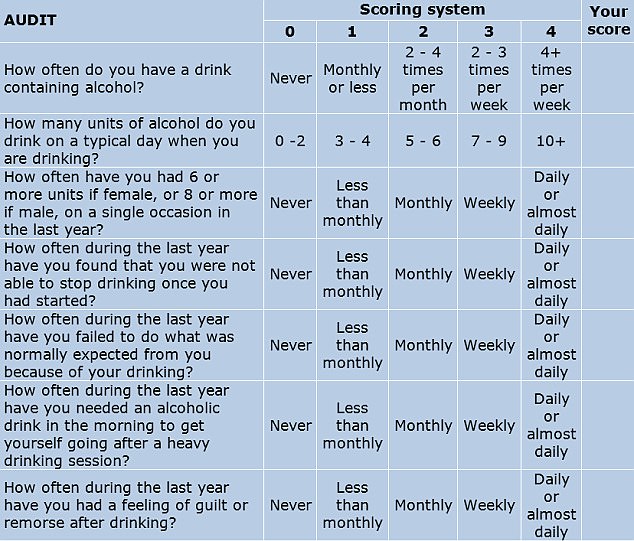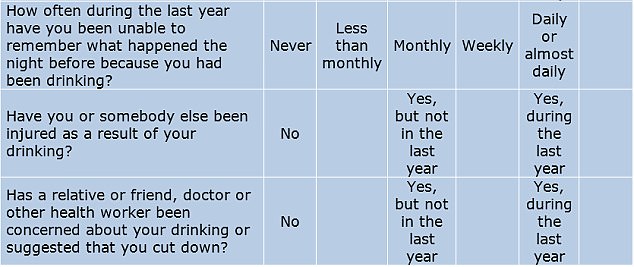Wine o’clock could be DEADLY: Liver disease rates have shot up five-fold since the 70s – and experts fear heavy evening drinking may be to blame
For many, it is a reward for getting through another stressful day.
But Britain’s ‘wine o’clock’ culture is part of an alarming trend that has led to a fivefold increase in deaths from chronic liver disease since the 1970s.
New research has found that more than a third of people diagnosed after an emergency admission to hospital died within a year.
The data shows the ‘alarming’ extent of late diagnosis – with thousands of people only finding out they have the disease when it is too late.
Experts said the findings should serve as a ‘wake-up call’ to change lifestyle factors linked to the disease – namely alcohol and obesity – and called for more liver ultrasound scans for early detection.
Experts fear Britain’s ‘wine o’clock’ culture is part of an alarming trend that has led to a fivefold increase in deaths from chronic liver disease since the 1970s (stock image)
Researchers used anonymized hospital data to identify people for whom an emergency hospital admission was the first sign that they had chronic liver disease.
The researchers found that of the 30,000 emergency admissions per year in England, 13,000 were patients diagnosed for the first time.
One in six patients (17 percent) died in hospital and 37 percent died within a year after emergency admission.
Of those who left hospital, 34 percent were readmitted within a month, according to findings presented at the British Association for the Study of the Liver (BASL) conference in Brighton.
Dr. Jessica King, assistant professor at the London School of Hygiene & Tropical Medicine, said: ‘Our analysis of all hospital data from across England allows us to measure the full extent of this problem for the first time.
‘The first results are grim: the number of patients diagnosed in an emergency situation is increasing, but survival has hardly improved.
‘Until now we have only looked at the years leading up to the COVID-19 pandemic, and the picture could look even worse with the disruption to healthcare and increased alcohol consumption during that time.’
Chronic liver disease kills more than 10,000 people in Britain every year and is one of the leading causes of death under 65.
Unlike many other diseases, rates are rising, with alcohol consumption and obesity both leading causes.
Vanessa Hebditch, policy director at the British Liver Trust, said people wrongly believe they are not at risk.
She said: ‘People have the misconception that you have to be an alcoholic to get liver disease. But you can actually cause many of us to drink at levels that can actually cause harm.
‘If you drink half a bottle of wine every night, which is easy with a glass while you cook, another glass with dinner and maybe a third while you watch TV, then you are drinking potentially harmfully.
‘It is now really ingrained in our culture: you can eat prosecco for breakfast.
‘The other major cause is fatty liver disease and the big risk factors for that are obesity and type 2 diabetes. We know how the prevalence of that has increased.’
She said better early detection is needed, for example by allowing GPs to perform more fibroscans, a type of ultrasound that measures liver stiffness and changes in the liver.
Professor William Bernal from the Institute of Liver Studies, Kings College Hospital, who led the study, said: ‘These new findings confirm the understanding of doctors treating people with liver disease. ‘Many present for the first time with advanced disease and outcomes can be very poor.
‘There is a clear need for early detection and prevention of chronic liver diseases, as well as for better inpatient care. The next steps for our team are to find out which care is linked to the best survival.”


